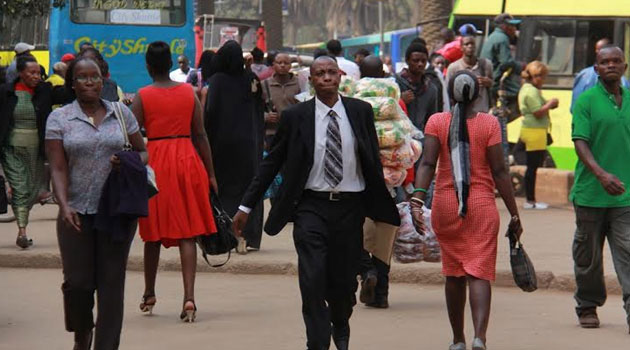
How Kenya Is Shaping a Smarter War Against Terror » Capital News
Kenya has made significant progress in its response against terrorism and violent extremism due to concertedefforts by various stakeholders.
According to the Global Terrorism Index 2025, the decreased terror activities within Kenya can be attributed to enhanced counter terrorism operations, intelligence sharing, inter-agency collaboration and community engagement within the last year.
The report further says the number of deaths attributed to terrorism especially from the Al-Shabaab- which is predominantly the most active terror group in Kenya and Somalia – dropped from 512 in 2023 to 387 in 2024, a decline of almost 25 per cent.
Of the 387 deaths attributed to the group, 91 per cent occurred in Somalia and the remaining nine per cent occurred in Kenya, Al-Shabaab was responsible for 33 deaths in Kenya in 2024, a 57 per cent decrease compared to the year prior.
Regionally, Deaths in sub-Saharan Africa excluding the Sahel – which remains terrorism’s epicenter, accounting for over half of all global terrorism deaths- are now at their lowest since 2016, dropping by 10%.
Despite the gains, terrorism continue to pose a threat to global and national security as it evolves with the tides of technology, ideology, and geopolitics and hence calling for an adjustment to the fight against it.
Early threats
Independent Kenya experienced its first bomb blasts though not linked directly to terrorism in early 1975. The blasts at the popular Starlight Night Club on Tom Mboya Street and the other one near the Hilton Hotel the motivation behind the attack was never revealed. In 1980, 20 people of several nationalities were killed and many others injured after the Norfolk hotel was bombed by terrorists.
To show the changing threat landscape which government agencies have to respond to, the August 1998 Nairobi attack and the 2001 Kikambala bombing were believed to have been orchestrated by al-Qaedaoperatives who had a more organized centralized command structures while the 2013 Westgate mall attack, the 2014 Mpeketoni attack and 2019 Dusit hotel attack may have been inspired by small cells operating under a more decentralized structure supporting the earlier assertion that terrorism is evolving.
Since Kenya was designated by the US government as‘an anchor state’ in the Horn of Africa and a ‘frontline’ in the ‘Global War on Terror’ GWOT the government had to come up with new strategies to respond to the threat applying both hard and soft approaches such as intelligence operations, border security, community policing, and counter-radicalization programs.
In 2016, the government came up with a National Strategy to Counter Violent Extremism (NSCVE) aimed at preventing, countering and reversing radicalization. The strategy was to employ several tactics touching on Counter Violent Extremism with an aim of minimizing sympathy for terrorism as a means to change society or politics, promoting patriotism for Kenya’s nationhood, enhancing government support to local communities that are targeted by violent extremists by addressing communal grievances upon which violent extremist recruiters mobilize support as well as develop early warning systems and measures that can help the community recognize the signs adopted by those being radicalized.
The strategy also looks into ways to rehabilitate and reintegrate individuals who disengage from violent extremism develop expertise in non-coercive approaches and effectively use law enforcement to deter and prosecute radicalizing individuals and institutions.
Lessons learnt
Over time, drawing from the strategy and lessons drawn from other countries, any counter narrative has to be guided by local contexts. This includes the need to prevent and resolve conflicts. For example. In the Sahel Conflict deaths in the Sahel reached their highest level since 2012, surpassing 25,000 for the first time.
Weak governance, ethnic tensions, and ecological degradation have fueled terrorism, worsened by transnational jihadist growth and geopolitical competition according to the Global Terrorism Index 2025.
Another lesson learnt from diverse experiences is the need to coordinate information sharing among key players. To achieve the required results the civil society and governments must work together. Security agencies across the sections should also collaborate during operations to minimize the risks and effectively handle threats active and looming.
The involvement of communities in dealing with radicalization is also another way of dealing with the threats associated with terrorism. Investing in de-radicalization rehabilitation and re-integration are key in winning the war of ideas with violent extremist groups. This is why the government must continue to engage religious leaders, youth leaders from across the economic divide and the society in general by Integrating communities into national security frameworks.
Recognition that there must be inclusive policies to address the various socio-economic and political drivers that drive violent extremism narratives has also helped a lot. Countries like Netherlands has implemented various programs aimed at preventing radicalization, including initiatives focused on education, social work, and working with families and communities affected by terrorism and violent extremism.
The positive results witnessed in Kenya and the region at large are as a result of continued collaboration by countries on law enforcement, intelligence sharing, and border security to disrupt terrorism activities.
Although the media has a right to report on terrorist acts and potential threats, training of media professionals on how they can make a positive contribution to the prevention of terrorism remains high priority in the era of fake news and AI. Practitioners both in the main stream and new media should avoid publishing graphics image and information portraying terrorists as powerful.
Written by John Omare who is a security expert based in Nairobi